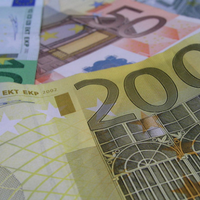Forecasting the future by looking at the past
| 25-7-2017 | Lionel Pavey |

A key role within the Treasury function is providing forecasts to the directors and management. The most obvious would be the cash flow forecast, but others would include foreign exchange prices, interest rates, commodities and energy.
A forecasts is a tool that helps with planning for the uncertainty in the future, by analyzing data from the past and present whilst attempting to ascertain the future.
Internal – cash flow forecast
We would like our forecasts to be as accurate as possible – that the values we predict are close to the actual values in the future. This requires designing a comprehensive matrix to determine the variables needed for the data input. Data has to be provided by all departments within a company to enable us to build a forecast. This data needs to be presented in the same way by all contributors so that there is consistency throughout.
We also have to see if the forecast data is within the parameters of the agreed budget. We also need to check for variances – why is there a difference and how can it be explained.
External – FX and Interest Rates
A more common approach is to read through the research provided by banks and data suppliers to try and see what the market thinks the future price will be. Also we need to include data from the past – we need to know where the price has been, where it is now and what the expectation is for the future.
Extrapolating forward prices is notoriously difficult – if it were simple, we would all be rich in the future! But, by including past data, we can see what the price range has been, both on a long term as well as a short term basis.
When attempting to find a future value there are 2 common methods used – fundamental and technical.
Fundamental Analysis
Use is made of economic and financial factors both macroeconomic (the economy, the industrial sector) and microeconomic (the financial health of the relevant company, the performance of the management). The financial statements of a company are analysed in an attempt to arrive at a fair value. This leads to an intrinsic value, which is not always the same as the current value.
The value is normally calculated by discounting future cash flow projections within the company.
Technical Analysis
Use is made of the supply and demand within the market as a whole and attempts to determine the future value by predicting what the trend in the price should be. This is done by using charts to identify trends and patterns within the data. This assumes that the market price now is always correct, that prices move in determinable trends and that history repeats itself. Technical analysis uses the trend – this is the direction that the market is heading towards.
Whilst these 2 approaches are independent of each other, they can be used together. You could take a fundamental approach to value a company or asset, and then use technical analysis to try and determine when you should enter and exit the market.
Fundamental analysis is more of a long term path and technical analysis is more short term. The most important thing to remember is that markets only really experience large movements based on changes to the fundamentals. Predicting the long term future only via technical analysis is likely to be incorrect. All the major movements over the last 50 years in the prices of shares, bonds, foreign exchange and interest rates have occurred because of a change in the fundamentals.
In the next article, I will look at various methods of calculating averages to determine the trend.
An economist is an expert who will know tomorrow why the things he predicted yesterday didn’t happen today.

Cash Management and Treasury Specialist









